Blue Angels Launch
75th Anniversary Air Show Season
May 2021 Prove to be a SUPER Year - for both Team and Fans
By: Shelly Fritzler | Air Show Center | 04-17-2021
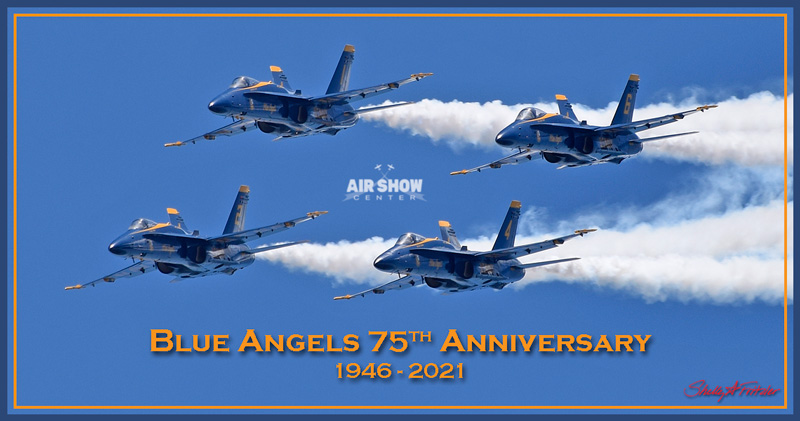
2021 is full of promise to be an epic year for the U.S. Navy Flight Demonstration Squadron (Blue Angels). Not only is the team celebrating an impressive 75th anniversary, but the Blue Angels also will perform their precision flight demonstrations in new aircraft for the first time in 35 years. Now, if only fans were able to share in all of the excitement, 2021 could prove to be a super year for all.
The Blue Angels haven't been able to perform at air shows for fans in over a year, due to the COVID-19 pandemic and resulting restrictions on large gatherings. Beginning last March, disappointment grew, as air show after air show was cancelled. The final blow was the cancellation of the annual Blue Angels Homecoming Air Show at NAS Pensacola, Fla. in November, marking the loss of their entire 2020 air show season. Not only do fans miss the Blue Angels, but the Blue Angels also miss their fans. Thankfully, that is about to change this weekend, as the Blue Angels return to air show center and launch their season live, in front of fans, April 17-18 at SUN ‘n FUN Aerospace Expo in Lakeland, Fla.
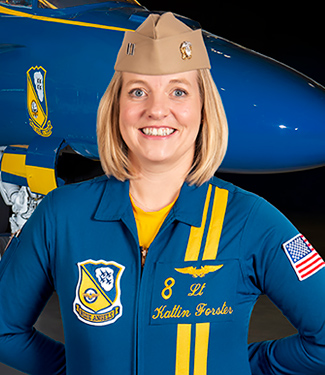
I am looking forward to the opportunity to perform at air shows and interact with fans again.
"Since community outreach is a part of our Blue Angel mission, I am looking forward to the opportunity to perform at air shows and interact with fans again," said Blue Angel #8 Lieutenant Katlin Forster, events coordinator. Early season cancellations at NAF El Centro in California and NAS Jacksonville in Florida have delayed the start of this year's air show season, but the team currently plans to perform 53 flight demonstrations at 28 locations across the United States and Canada during its 75th Anniversary air show season.
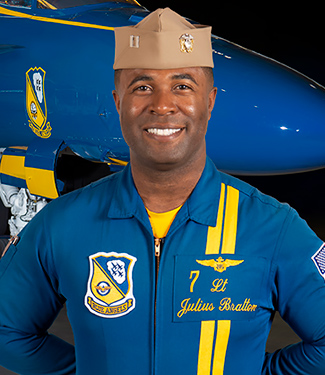
The entire team is practicing to put on a world-class flight demonstration.
“The entire team is practicing to put on a world-class flight demonstration,” said Blue Angel #7 Lieutenant Julius Bratton, team narrator. "We are looking forward to getting back on the road and accomplishing the mission of showcasing the precision and teamwork of the USN and USMC.“ Over the winter, while the demonstration pilots practiced to perfect their flight routine, Forster and Bratton visited this year's show sites to firm up planning details in preparation for their important anniversary show season. Of the magnitude of the milestone Bratton said, "It's an incredible honor to carry on the tradition of excellence that started with the first team in 1946.”
According to the team's history, U.S. Navy Admiral Chester Nimitz first envisioned the flight demonstration team as a means to increase interest in naval aviation among the general public, as well as boost Navy morale. Since their first air show at Craig Field in Jacksonville, Fla, June 15, 1946, the name Blue Angels has become synonymous with excellence, precision and professionalism and, today, fans around the world instantly recognize the team’s jet aircraft in distinctive Navy blue and gold livery. Now, current team members will follow in their past teammates’ flight path as they lead the Blue Angels into an exciting new era.
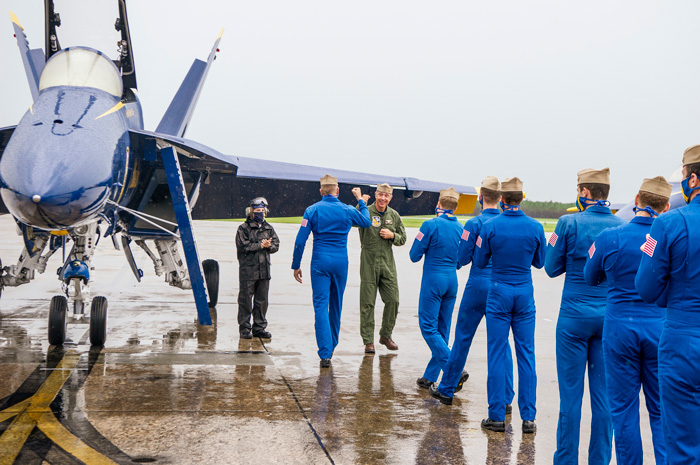
U.S. Navy photo by: Mass Communication Specialist 2nd Class Cody Hendrix
“We are celebrating our 75th anniversary by introducing two new platforms, the C-130J Super Hercules and the F/A-18E/F Super Hornet,” Lt Bratton said. The Blue Angels originated as a three-ship team, performing formation flight demonstrations in the radial piston engine F6F Hellcat and later F8F Bearcat, both Grumman carrier-based aircraft of the WWII era. As naval aviation technology advanced during the 50s and 60s, the team transitioned through a series of Grumman jet aircraft, including the F9F-2 Panther, F9F-5 Panther, F9F-8 Cougar and F11F-1 Tiger.
In 1969, the team began flying McDonnell Douglas aircraft, first the F-4J Phantom II and then the A-4F Skyhawk II in 1974. At the close of its 40th anniversary year in 1986, the team introduced the McDonnell Douglas (now Boeing) F/A-18 Hornet, the first dual-role fighter/attack aircraft. The team has continued to fly the Hornet, upgrading to newer C/D models in 2010. All together, the Hornet has been the team’s demonstration aircraft for the past 35 years and its image in the minds of fans in the modern era. During 2020, the Blue Angels bid a fond farewell to their F/A-18C/D “Legacy” Hornets and transitioned into the newer F/A-18E/F Super Hornet model.
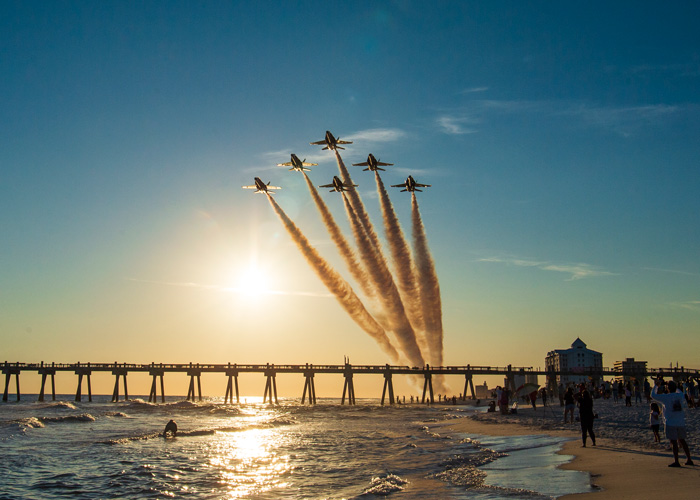
U.S. Navy photo by: Mass Communication Specialist 2nd Class Cody Hendrix
The "new" Super Hornets are actually early production fleet aircraft, transferred from Navy squadrons. Prior to delivery to the Blue Angels, the aircraft were modified and refurbished by Boeing and received a shiny new blue and gold paint job, making what is old new again. Compared to the Legacy Hornet, the Super Hornet is heavier and substantially larger, has a greater fuel capacity and increased range, and can carry more weapons, but many air show fans simply want to know what the Blue Angels' air show performance will look like in the new jets.
"With the Super Hornet being 33 percent bigger, the show will naturally look different to everyone this year!" Forster said. Performance-wise, "you can expect the same precise flying from the entire delta formation, as well as seeing the maximum performance of the aircraft from the solos," said Bratton, adding "With more thrust, you will see incredibly graceful-looking maneuvers at slow speed." When asked whether their show will include new maneuvers, Bratton said, "The team is slightly modifying some maneuvers to showcase some differences afforded by the Super Hornet. One of which is the turbo-nose-low capability of the jet, when it goes from a high angle of attack to straight and level flying."
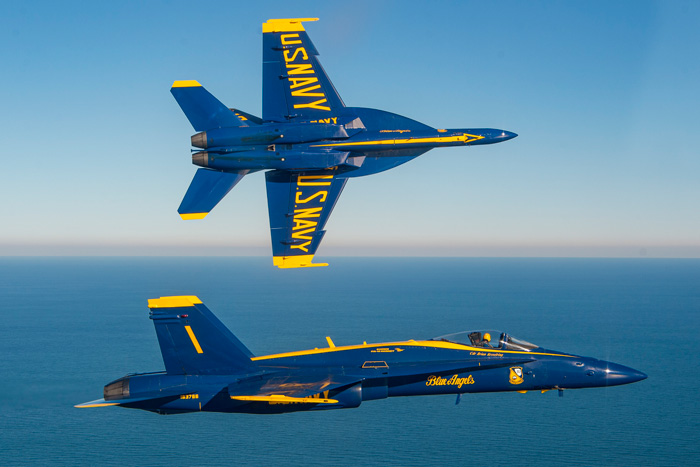
U.S. Navy photo by Mass Communication Specialist 2nd Class Christopher Gordon
In addition to the team's new Super Hornet demonstration aircraft, the Blue Angels' all-Marine transport flight crew is also celebrating the anniversary with a super new ride. The Marines will fly their demonstration maneuvers and transport the team's road-crew personnel, supplies, and equipment to and from show sites aboard their new Lockheed Martin C-130J Super Hercules. The Super Herc, acquired from the U.K.’s Royal Air Force, is the newest model of old friend "Fat Albert."
The Blue Angels began operating a Marine Corp Lockheed KC-130 Hercules with an all-Marine crew in 1970, after using a series of other logistics aircraft. Pilots nicknamed the large, seemingly ungainly aircraft after the popular cartoon character Fat Albert and the name, aircraft and Marine crew have became part of Blue Angels' tradition. Fat Albert is widely known for its past jet-assisted take off (JATO) demonstrations, added to the team's performances in 1975. In combat, pilots used the JATO to enable the C-130 to make short-field take offs and quickly gain high altitude to escape harm's way. The dramatic maneuver was powered by eight solid-fuel JATO rocket bottles, each producing 1,000 pounds of thrust, launching the C-130 into the sky. Blue Angels Marine pilots thrilled fans with the JATO up until 2009, when they exhuasted their supply of remaining Vietnam-era JATO bottles. The Blue Angels have continued to operate the C-130, retiring their last Hercules in 2019, after 17 years of proud service. The new Super Hercules rounds out the Blue Angels' all-new fleet of aircraft, set to debut to the public for the 2021 air show season.
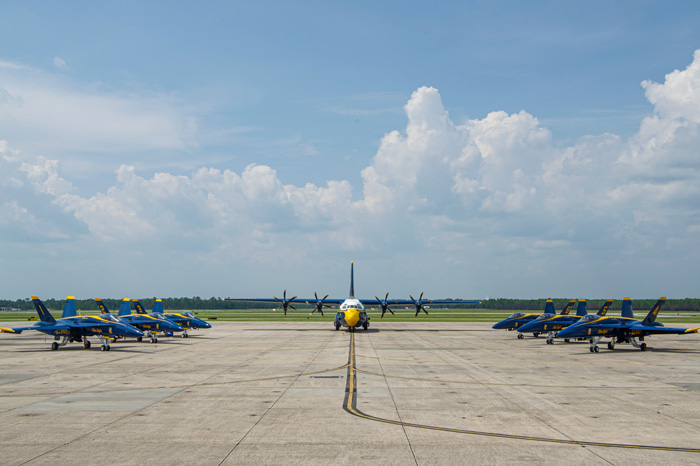
U.S. Navy photo by Mass Communication Specialist 2nd Class Christopher Gordon
Of course, as the COVID-19 pandemic recovery continues to evolve, the outome of the 2021 air show season remains up in the air. However, the Blue Angels remain optimistic about the opportunity to perform at air shows and engage with fans. "I do believe we will still have to be creative this year with how we are able to complete this mission, but I am hoping with shows being set up to be socially distant we can still reach people across the country," Forster said.
